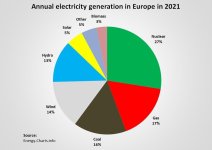I am far from the only UCS staffer to feel “seen” by Don’t Look Up, a satire that I found to be infuriating and cathartic all at once. You don’t have to like it. Dr. Strangelove or: How I Learned to Stop Worrying and Love the Bomb was heavy-handed, too. But we are going to keep talking about it.
As my climate scientist colleagues have pointed out, the comet is a powerful allegory for climate change and the consequences of failing to overcome fossil fuel and corporate interests. But the film was also a powerful reminder that these interests are obstructing clear-cut solutions, such as renewable energy, leaving us with nonsense “solutions” that only serve to maintain the status quo — benefiting the wealthy and powerful at the expense of literally everyone on the planet.
We need to talk about the scene where the fictionalized U.S. government had a clear-cut solution in front of them, and just … didn’t do it.
Once the corrupt government in Don’t Look Up finally found it in its self-interest to *do something* about the comet, there was actually a pretty good plan to knock the comet off course with nuclear missiles. The mission had more than an 80 percent chance of success once things were in motion.



